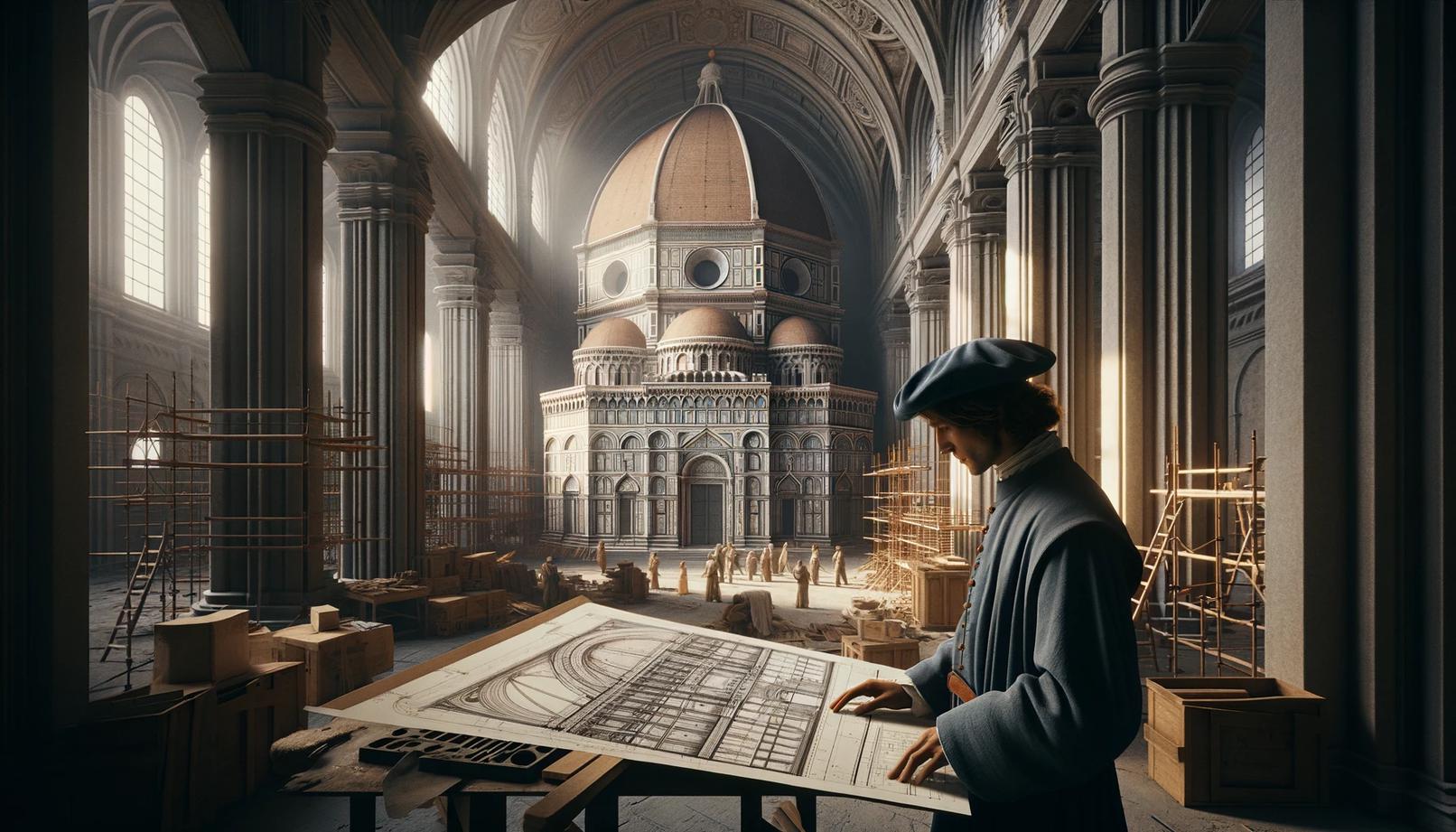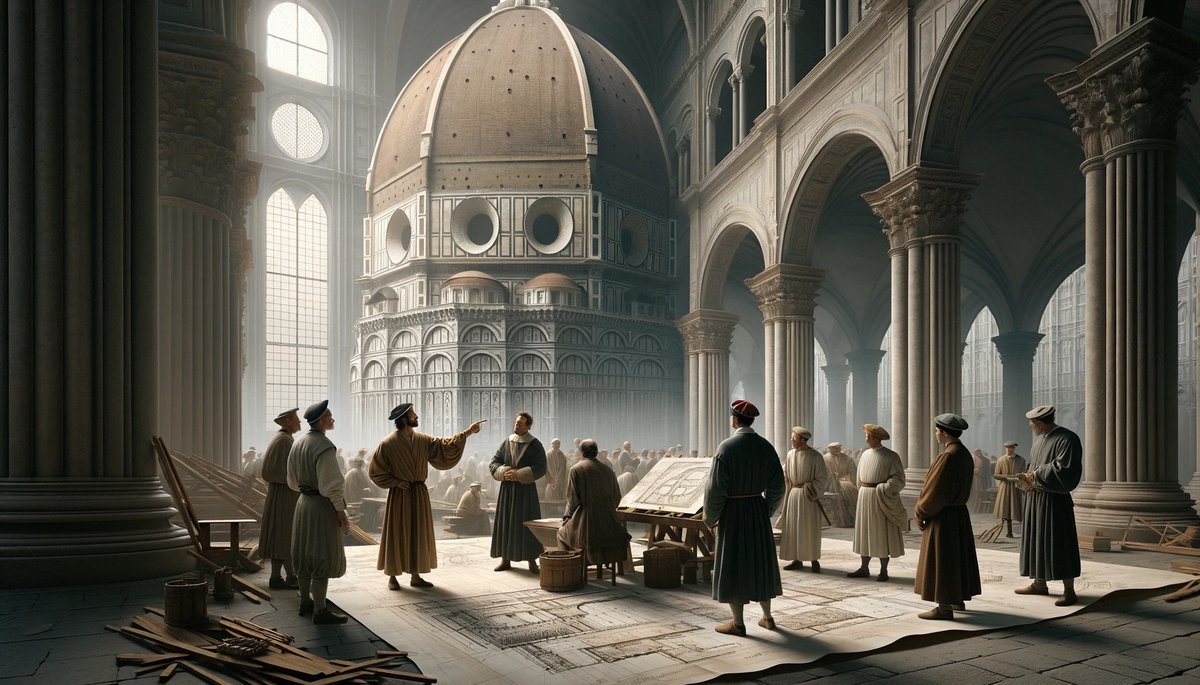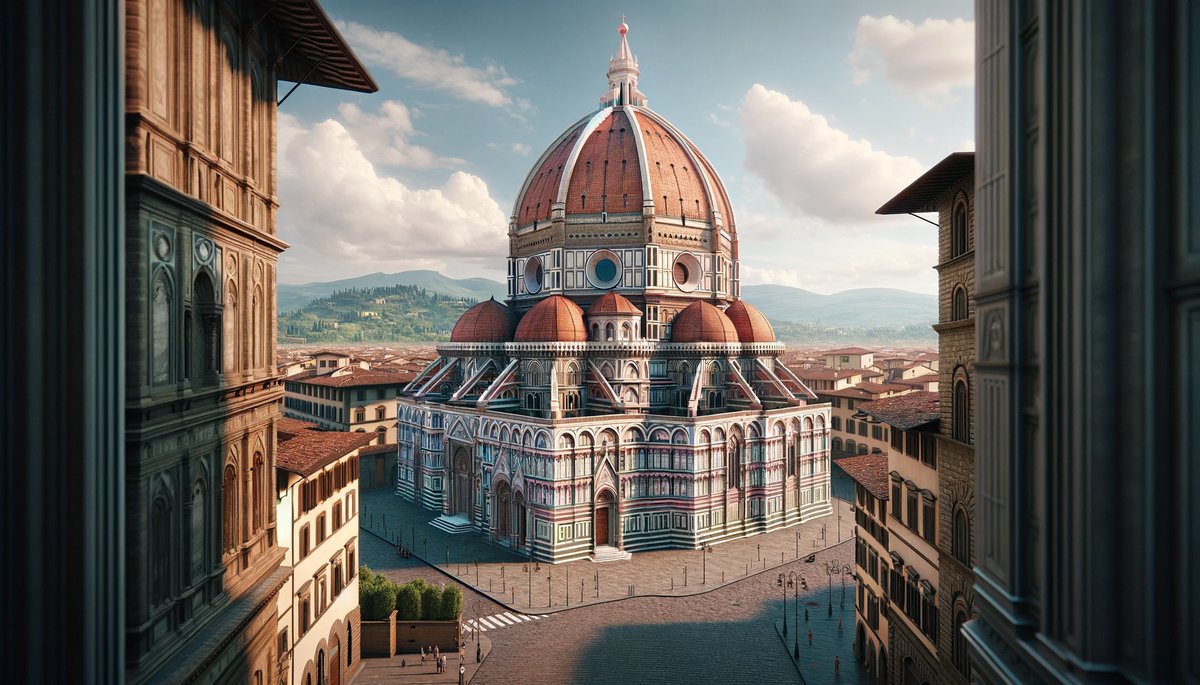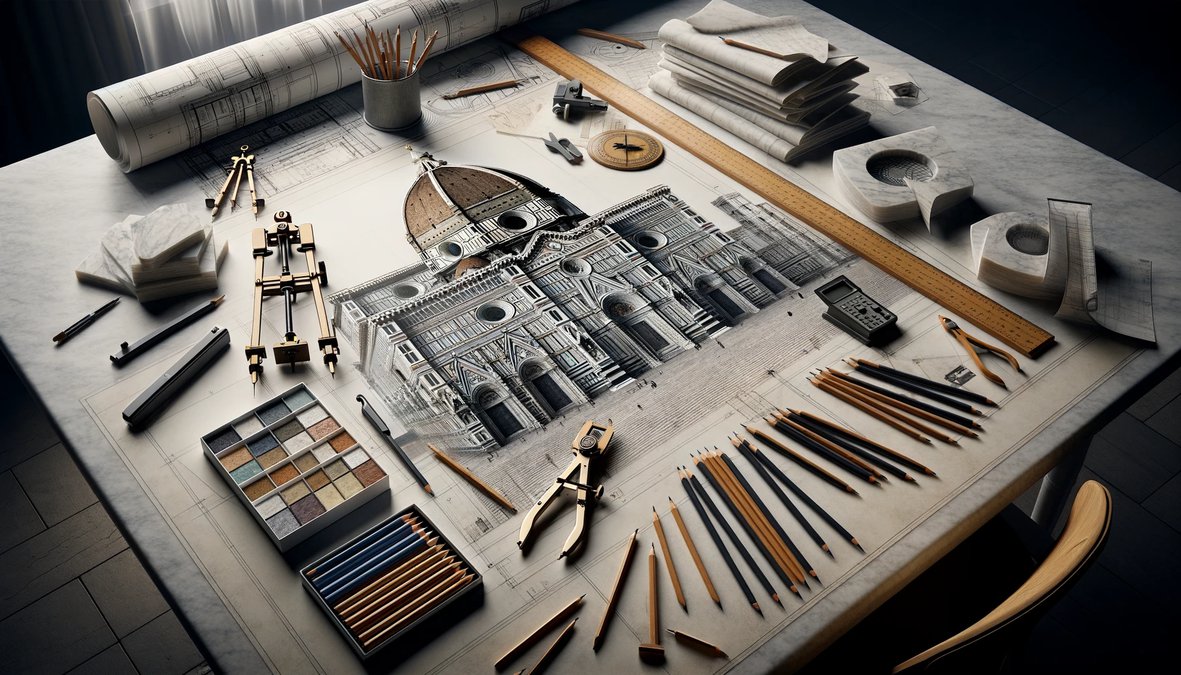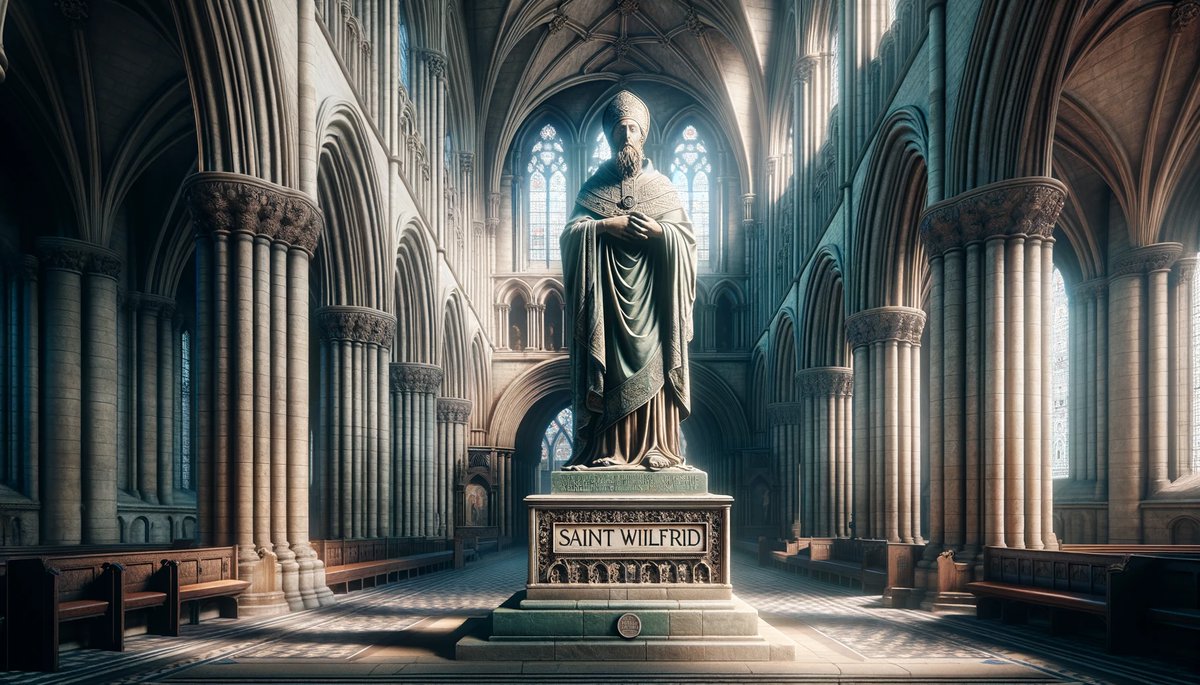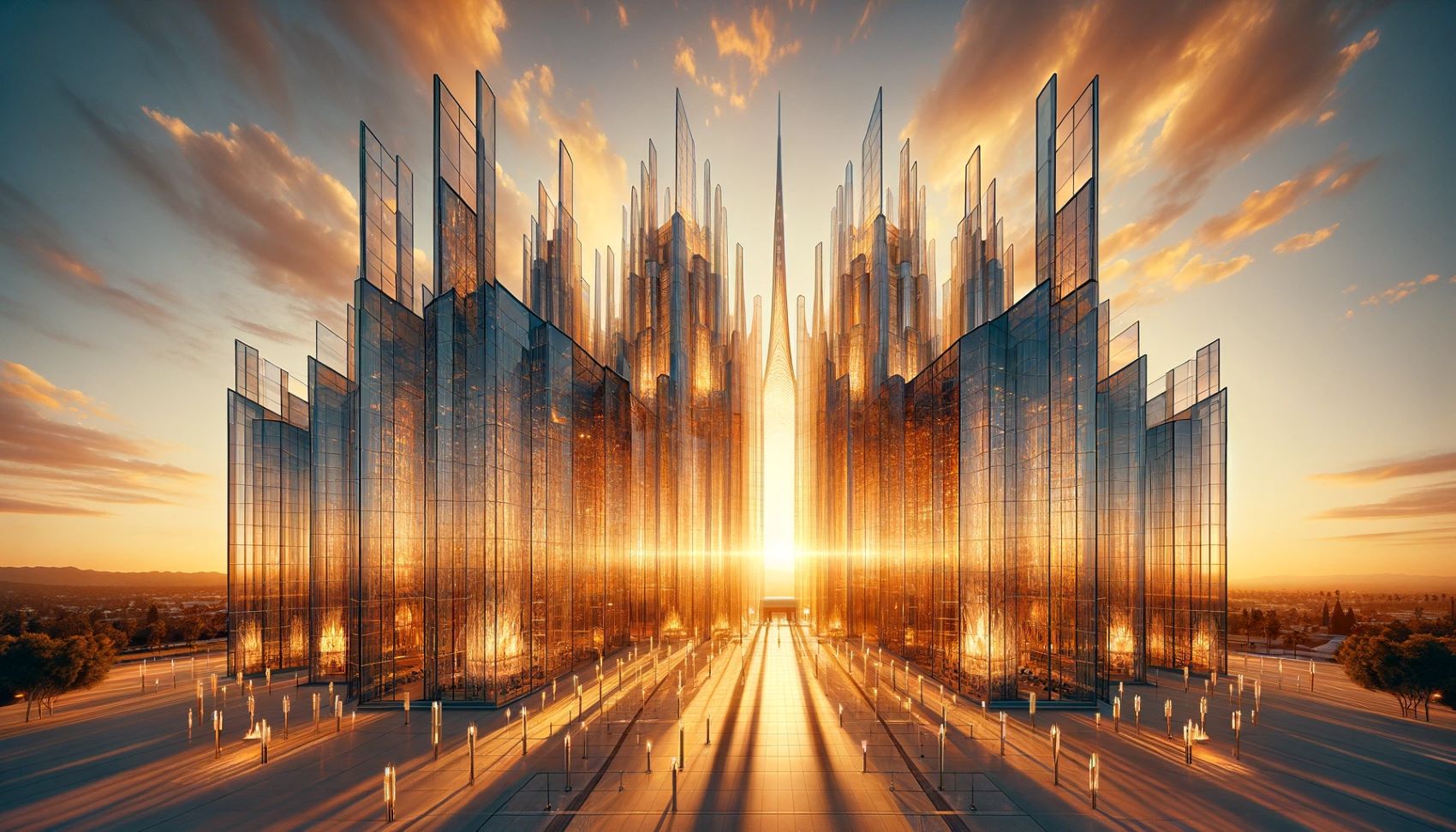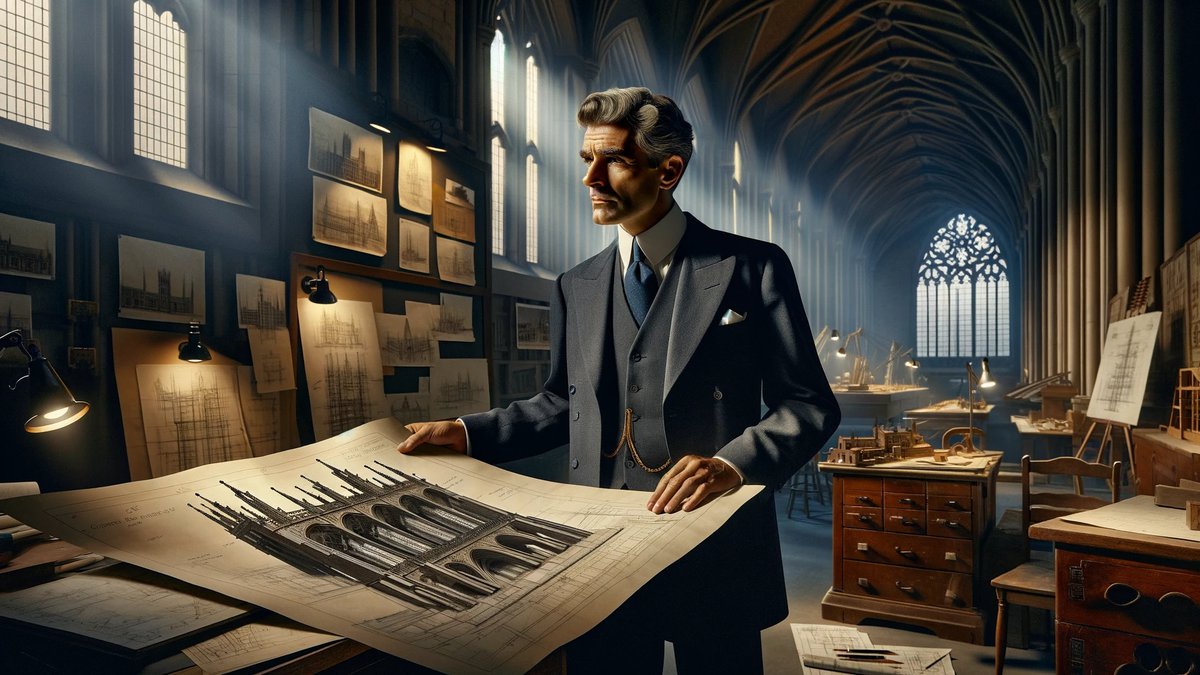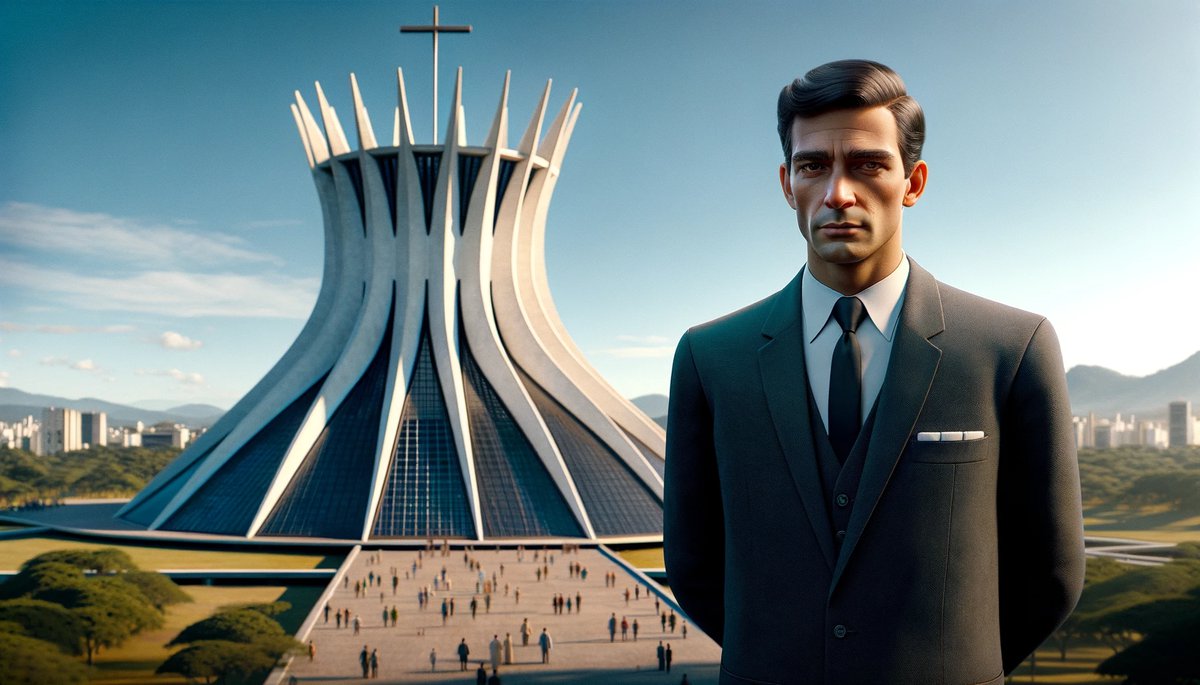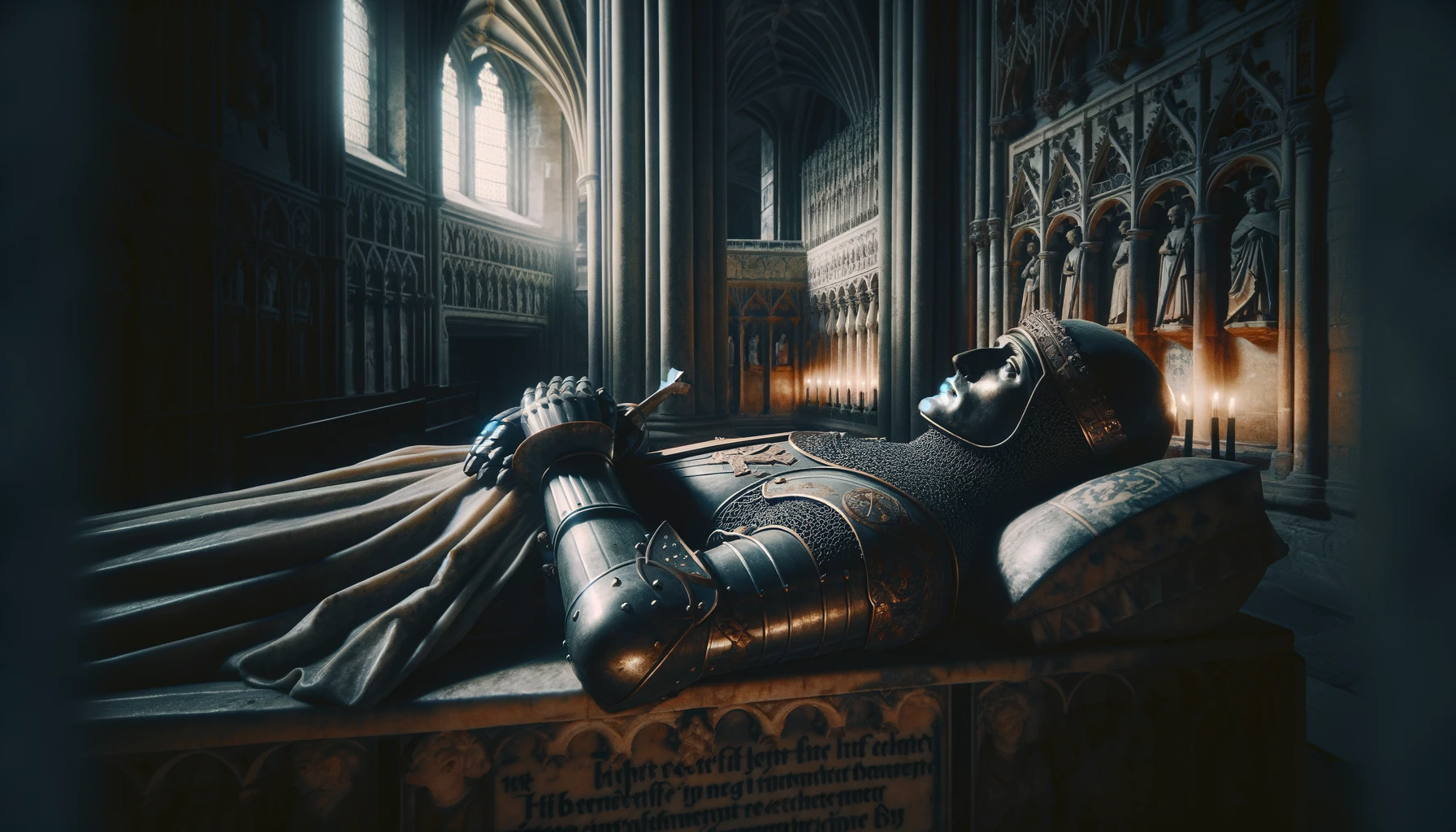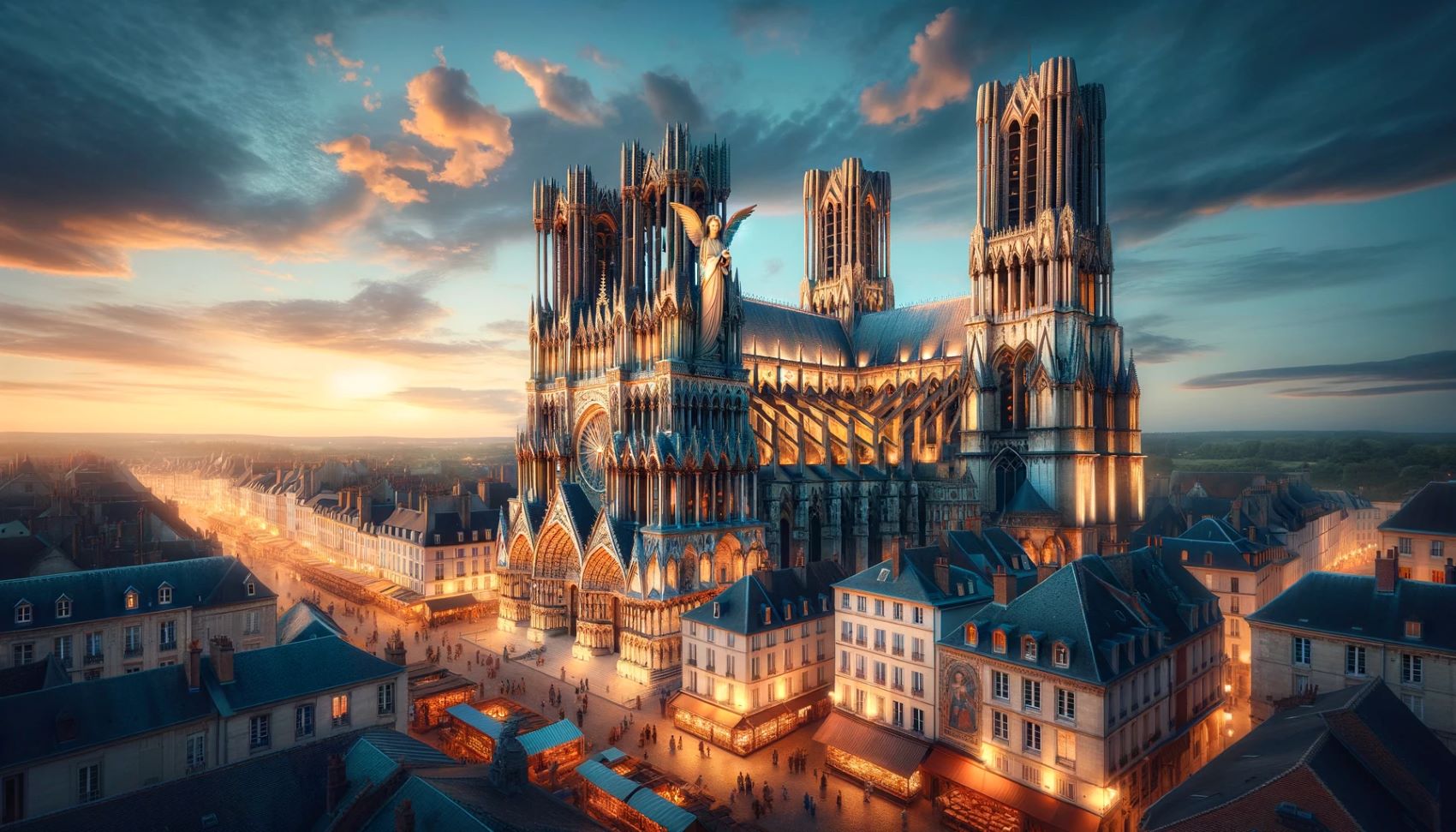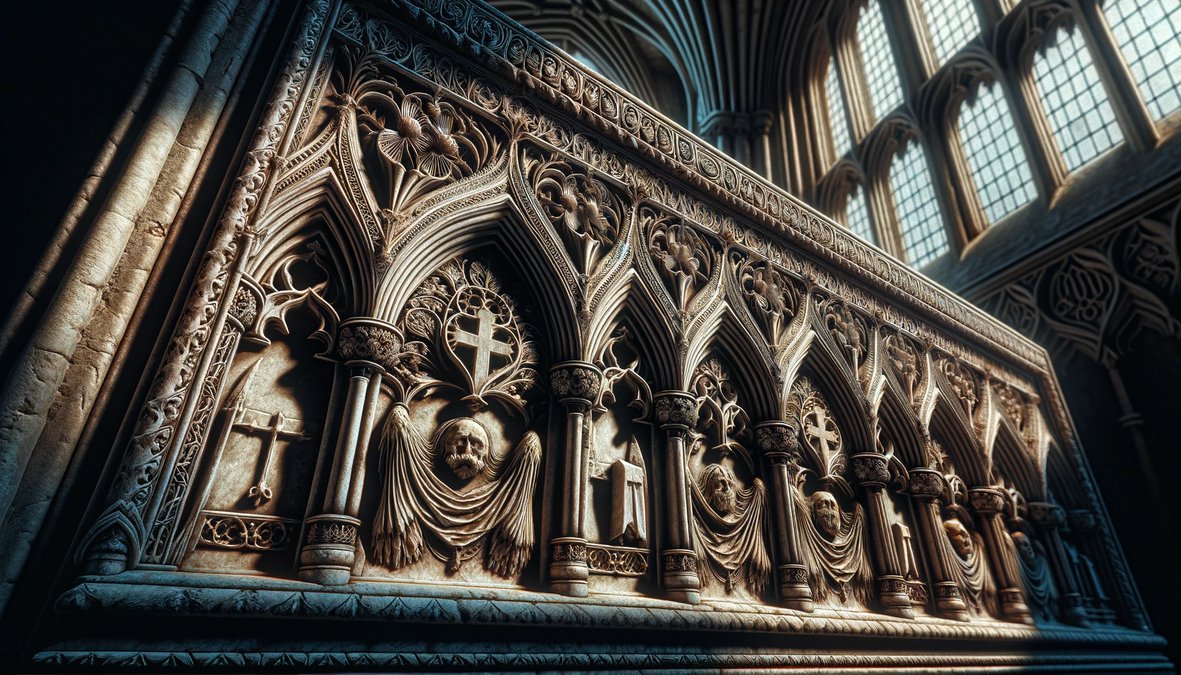Home>Arts and Culture>Who Created Florence Cathedral
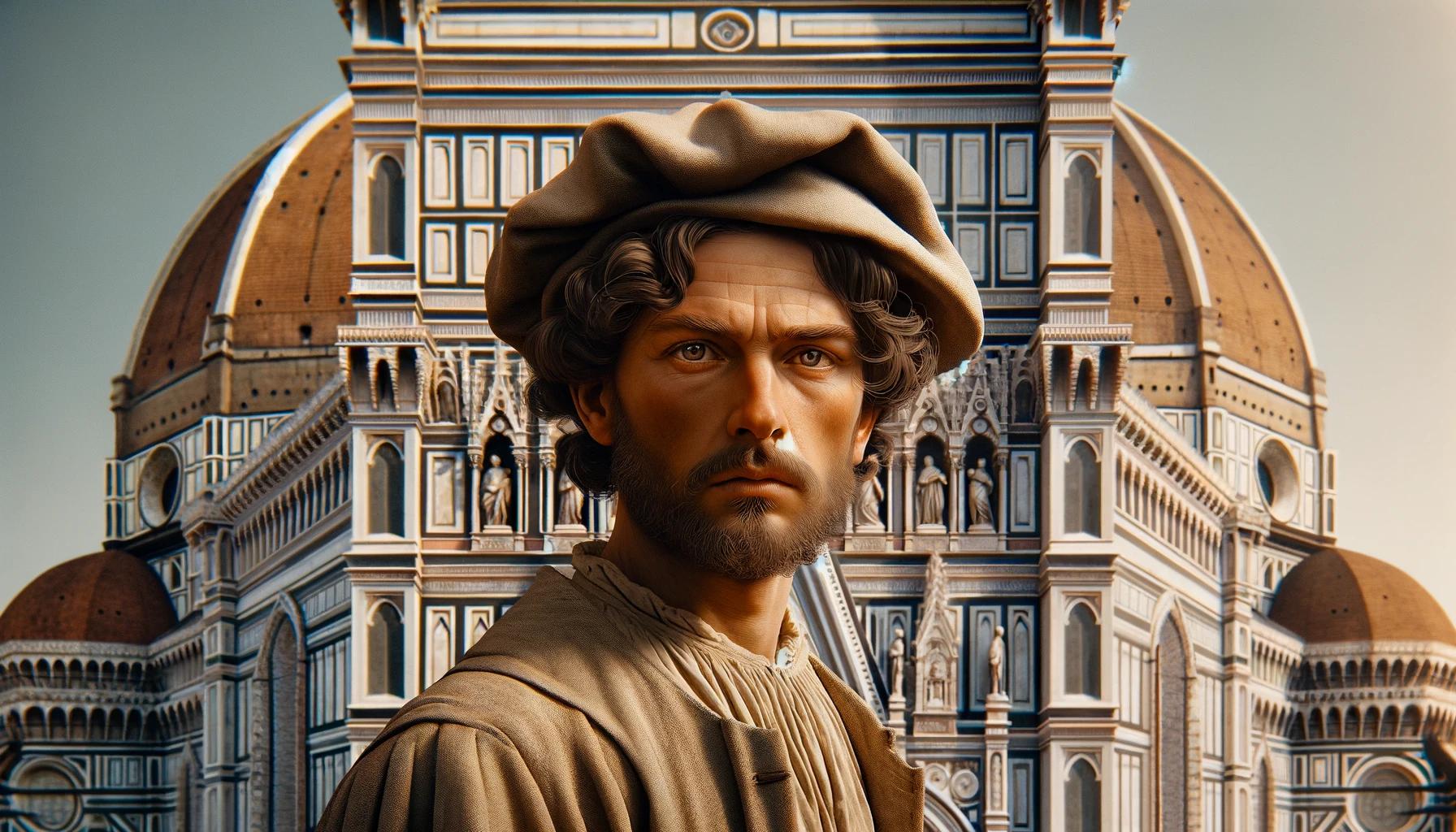

Arts and Culture
Who Created Florence Cathedral
Published: February 16, 2024
Jason DeRose, Managing Editor at Christian.net, uses his expertise in religion and journalism to deepen understanding of faith's societal impacts. His editorial leadership, coupled with a strong academic background, enriches the platform’s diverse content, earning him recognition in both journalism and religious circles.
Discover the history behind the creation of Florence Cathedral and the influential figures in the arts and culture who contributed to its construction. Explore the artistic and cultural significance of this iconic landmark.
(Many of the links in this article redirect to a specific reviewed product. Your purchase of these products through affiliate links helps to generate commission for Christian.net, at no extra cost. Learn more)
Table of Contents
Introduction
Florence Cathedral, also known as the Cattedrale di Santa Maria del Fiore, is a magnificent symbol of the city's rich history and artistic prowess. This iconic structure stands as a testament to the ingenuity and creativity of the Renaissance period, captivating visitors with its awe-inspiring architecture and intricate design.
The cathedral's construction began in 1296, and it took over 140 years to complete this architectural marvel. Its grandeur and significance extend beyond its physical presence, as it represents the cultural and artistic achievements of Florence during the Renaissance era. The cathedral's construction and adornment involved the collaboration of numerous talented individuals, including architects, artists, and sculptors, each contributing their expertise to bring this monumental project to fruition.
As we delve into the history and creation of Florence Cathedral, we will uncover the remarkable stories of the visionaries and artisans who dedicated themselves to this ambitious endeavor. From the initial conception of the cathedral to the meticulous craftsmanship that adorns its interior, every aspect of its creation reflects the passion and skill of the individuals involved.
Join us on a journey through time as we explore the early history, construction, and the brilliant minds behind the creation of Florence Cathedral. Through this exploration, we will gain a deeper appreciation for the cultural significance and enduring legacy of this architectural masterpiece.
Early History of Florence Cathedral
The origins of Florence Cathedral can be traced back to the 13th century when the city of Florence sought to build a grand cathedral that would reflect its growing prosperity and influence. In 1293, the city held a design competition to select the architect for the new cathedral. The winning design was submitted by Arnolfo di Cambio, a renowned architect and sculptor of the era. His vision for the cathedral encompassed a grand structure that would surpass the scale and magnificence of any existing building in the region.
Construction of the cathedral commenced in 1296, with the laying of the foundation stone. The initial phase of the construction focused on the building's impressive dome, which was a groundbreaking architectural feat for its time. The dome, designed by Filippo Brunelleschi, would later become one of the most iconic features of the cathedral.
The cathedral's construction progressed slowly over the years, facing numerous challenges and setbacks, including financial constraints and political turmoil. Despite these obstacles, the city remained steadfast in its commitment to realizing the vision of a cathedral that would stand as a testament to its cultural and artistic prowess.
As the cathedral began to take shape, it became a focal point of artistic and architectural innovation. The intricate marble facade, adorned with elaborate sculptures and reliefs, showcased the skill and creativity of the craftsmen involved in its construction. The cathedral's interior also became a canvas for renowned artists, including Giotto and Donatello, who contributed their talents to embellish the sacred space with exquisite frescoes and sculptures.
The early history of Florence Cathedral is a testament to the unwavering dedication of the city and its artisans to create a structure that would transcend time and inspire generations to come. The cathedral's evolution mirrored the cultural and artistic advancements of the Renaissance period, solidifying its place as a symbol of Florence's enduring legacy.
As the cathedral continued to take shape, it became a source of pride and identity for the city, embodying the spirit of innovation and creativity that defined the Renaissance era. The journey of its construction reflects the resilience and determination of the people involved, as they overcame challenges to bring to life a monumental architectural masterpiece that continues to captivate and inspire visitors from around the world.
Construction of Florence Cathedral
The construction of Florence Cathedral, also known as the Cattedrale di Santa Maria del Fiore, stands as a testament to the unwavering dedication and ingenuity of the artisans and architects involved in this monumental project. Initiated in 1296, the construction of the cathedral was a massive undertaking that spanned over 140 years, encompassing a series of remarkable architectural and engineering achievements.
One of the most notable aspects of the cathedral's construction was the ambitious design of its dome. The original architect, Arnolfo di Cambio, envisioned a dome that would surpass the scale and complexity of any existing structure. However, it was Filippo Brunelleschi, a pioneering architect of the Renaissance era, who ultimately brought this vision to fruition. Brunelleschi's innovative approach to constructing the dome, utilizing a double-shell design and revolutionary hoisting mechanisms, showcased his unparalleled engineering prowess and marked a significant advancement in architectural techniques.
The construction of the cathedral's facade was another remarkable feat, characterized by the intricate marble work and elaborate sculptures that adorned the exterior. The facade served as a canvas for skilled craftsmen and artists to showcase their talents, infusing the structure with a rich tapestry of artistic expression. The meticulous craftsmanship and attention to detail evident in the facade's design reflected the dedication of the artisans to create a visually stunning and enduring masterpiece.
As the construction progressed, the cathedral's interior became a showcase of artistic brilliance, with renowned artists such as Giotto and Donatello contributing their talents to adorn the sacred space with exquisite frescoes and sculptures. The interior design of the cathedral harmoniously blended architectural grandeur with artistic splendor, creating a space that captivated the senses and inspired reverence.
The construction of Florence Cathedral was not without its challenges, including financial constraints, political upheaval, and logistical hurdles. However, the unwavering commitment of the city and its artisans to realize this ambitious vision prevailed, resulting in the creation of a structure that transcended the limitations of its time.
The completion of Florence Cathedral in the 15th century marked a pivotal moment in the history of architecture and art, showcasing the culmination of centuries of dedication and innovation. The cathedral's construction represented a triumph of human creativity and perseverance, leaving an indelible mark on the cultural and artistic landscape of Florence and the world at large. Today, the cathedral stands as a living testament to the enduring legacy of the Renaissance era and continues to inspire awe and admiration among visitors who marvel at its timeless beauty and significance.
The Architect of Florence Cathedral
The visionary behind the iconic design of Florence Cathedral, also known as the Cattedrale di Santa Maria del Fiore, was Arnolfo di Cambio, a distinguished architect and sculptor of the 13th century. In 1293, Arnolfo emerged triumphant in a design competition held by the city of Florence to select the architect for the cathedral. His winning design laid the foundation for a grand and ambitious structure that would come to symbolize the city's cultural and artistic prowess.
Arnolfo's vision for the cathedral encompassed a monumental edifice that would surpass the scale and magnificence of any existing building in the region. His architectural expertise and innovative approach set the stage for the construction of a structure that would stand as a testament to the city's growing prosperity and influence.
Under Arnolfo's guidance, the initial phase of the cathedral's construction commenced in 1296, marking the beginning of a remarkable journey that would span over a century. His meticulous attention to detail and unwavering commitment to excellence laid the groundwork for the cathedral's enduring legacy.
While Arnolfo di Cambio laid the foundation for the cathedral's design, it was Filippo Brunelleschi, a pioneering architect of the Renaissance era, who made an indelible mark on the cathedral's construction. Brunelleschi's innovative approach to constructing the cathedral's dome, utilizing a double-shell design and revolutionary hoisting mechanisms, showcased his unparalleled engineering prowess and marked a significant advancement in architectural techniques.
The collaboration between Arnolfo di Cambio and Filippo Brunelleschi, spanning generations, exemplified the seamless integration of visionary design and groundbreaking engineering that defined the cathedral's construction. Their combined efforts resulted in the creation of a structure that transcended the limitations of its time, leaving an indelible mark on the architectural and artistic landscape.
The architectural legacy of Florence Cathedral stands as a testament to the enduring vision and ingenuity of Arnolfo di Cambio and the innovative spirit of Filippo Brunelleschi. Their contributions, spanning generations, continue to inspire awe and admiration, solidifying the cathedral's place as a timeless masterpiece that embodies the cultural and artistic achievements of the Renaissance era.
The Artists and Sculptors of Florence Cathedral
The creation of Florence Cathedral, also known as the Cattedrale di Santa Maria del Fiore, was not only a triumph of architectural innovation but also a testament to the artistic brilliance of the individuals who contributed to its adornment. The cathedral's interior and exterior served as a canvas for a diverse array of talented artists and sculptors, each leaving an indelible mark on this iconic structure.
One of the most renowned artists associated with Florence Cathedral is Giotto di Bondone, a visionary painter whose contributions to the cathedral's interior were nothing short of extraordinary. Giotto's frescoes, adorning the cathedral's interior, exemplified the pinnacle of artistic expression during the Renaissance era. His masterful use of color, form, and perspective transformed the cathedral into a visual symphony, captivating visitors with its timeless beauty and narrative richness.
Another luminary artist whose work graced Florence Cathedral was Donatello, a sculptor whose innovative approach to sculpting breathed life into the cathedral's sacred spaces. Donatello's sculptures, including the mesmerizing 'Mary Magdalene' and the evocative 'Prophet Jeremiah,' adorned the cathedral with a sense of ethereal beauty and emotional depth. His mastery of form and expression elevated the cathedral's ambiance, infusing it with a profound sense of spirituality and artistic grandeur.
The cathedral's facade, a marvel of intricate marble work and elaborate sculptures, bore the mark of skilled craftsmen and artists who dedicated themselves to creating a visually stunning and enduring masterpiece. The facade's design showcased the meticulous craftsmanship and attention to detail of the artisans involved, reflecting their unwavering commitment to excellence and artistic expression.
The collaborative efforts of these artists and sculptors, along with numerous other talented individuals, transformed Florence Cathedral into a living testament to the artistic achievements of the Renaissance era. Their contributions, spanning generations, continue to inspire awe and admiration, solidifying the cathedral's place as a timeless masterpiece that embodies the cultural and artistic legacy of Florence.
The artistic and sculptural legacy of Florence Cathedral serves as a testament to the enduring vision and creativity of the individuals who dedicated themselves to adorning this architectural marvel. Their collective brilliance has left an indelible mark on the cathedral, enriching its cultural significance and ensuring that it remains a source of inspiration and wonder for generations to come.
Read more: Who Painted Florence Cathedral Dome
Completion and Legacy of Florence Cathedral
The completion of Florence Cathedral, also known as the Cattedrale di Santa Maria del Fiore, marked a pivotal moment in the history of architecture and art. After over a century of meticulous construction and artistic adornment, the cathedral stood as a testament to the unwavering dedication and ingenuity of the artisans and architects involved in this monumental project.
Upon its completion in the 15th century, Florence Cathedral emerged as a crowning achievement of the Renaissance era, showcasing the culmination of centuries of dedication and innovation. Its grandeur and significance extended beyond its physical presence, as it represented the cultural and artistic achievements of Florence during a transformative period in history.
The cathedral's legacy transcended the boundaries of time, leaving an indelible mark on the architectural and artistic landscape. Its iconic dome, designed by Filippo Brunelleschi, became a symbol of architectural innovation and engineering prowess, setting a new standard for dome construction and inspiring future generations of architects.
The artistic and sculptural adornments within the cathedral, including the masterful frescoes by Giotto and the evocative sculptures by Donatello, enriched its interior with a sense of spiritual and artistic grandeur. These contributions, along with the collaborative efforts of numerous talented individuals, transformed Florence Cathedral into a living testament to the artistic achievements of the Renaissance era.
The completion of Florence Cathedral not only solidified its place as a cultural and architectural masterpiece but also established it as a symbol of Florence's enduring legacy. The cathedral became a source of pride and identity for the city, embodying the spirit of innovation and creativity that defined the Renaissance era.
Today, Florence Cathedral continues to inspire awe and admiration among visitors who marvel at its timeless beauty and significance. Its legacy lives on as a beacon of artistic and architectural excellence, serving as a reminder of the remarkable achievements of the past and a source of inspiration for future generations.
The completion and legacy of Florence Cathedral stand as a testament to the enduring vision and ingenuity of the individuals who dedicated themselves to this monumental endeavor. Their collective brilliance has left an indelible mark on the cathedral, enriching its cultural significance and ensuring that it remains a source of inspiration and wonder for generations to come.
Conclusion
In conclusion, Florence Cathedral, also known as the Cattedrale di Santa Maria del Fiore, stands as a timeless testament to the cultural and artistic achievements of the Renaissance era. From its humble beginnings in the 13th century to its completion in the 15th century, the cathedral's creation was a monumental endeavor that brought together the visionary designs of Arnolfo di Cambio, the innovative engineering of Filippo Brunelleschi, and the artistic brilliance of renowned painters and sculptors.
The cathedral's construction and adornment reflected the unwavering dedication and ingenuity of the individuals involved, transcending the limitations of its time to become a symbol of Florence's enduring legacy. The completion of Florence Cathedral marked a pivotal moment in the history of architecture and art, showcasing the culmination of centuries of dedication and innovation.
Today, Florence Cathedral continues to inspire awe and admiration among visitors who marvel at its timeless beauty and significance. Its legacy lives on as a beacon of artistic and architectural excellence, serving as a reminder of the remarkable achievements of the past and a source of inspiration for future generations.
As we reflect on the creation of Florence Cathedral, we gain a deeper appreciation for the collaborative efforts of visionary architects, pioneering engineers, and talented artists who dedicated themselves to bringing this architectural marvel to life. Their collective brilliance has left an indelible mark on the cathedral, enriching its cultural significance and ensuring that it remains a source of inspiration and wonder for generations to come.
In essence, Florence Cathedral stands as a testament to the enduring vision and creativity of the individuals who dedicated themselves to this monumental endeavor. Its timeless beauty and cultural significance continue to captivate the hearts and minds of all who have the privilege of experiencing this architectural masterpiece.
